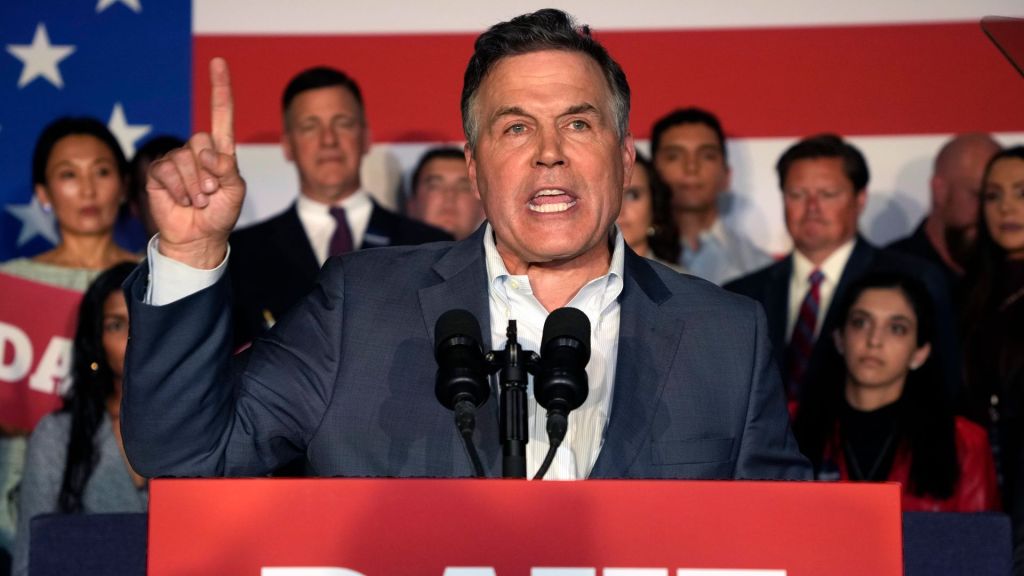
Karah Rucker
DOES ILLEGAL IMMIGRATION IMPACT THE U.S. HOUSING MARKET – AND IF SO THEN TO WHAT DEGREE?
THE ISSUE COMING UP DURING TUESDAY’S DEBATE.
Tim Walz
“I’m still on the fact on this economists you senator vance you said you don’t like the economist, which economists are saying that it is immigrants that’s adding to the cost?
Margaret Brennan
Your time is up but senator I’d like you to clarify there are many contributing factors to high housing costs, what evidence do you have that migrants are part of this problem?
JD Vance
“Well theres a federal reserve study we’re happy to share after the debate we’ll put it up on social media actually that really drills down on the connection between increased levels of migration especially illegal immigration and higher housing prices..”
Karah Rucker
VANCE TOOK TO X TO POST A LINK FROM THE FEDERAL RESERVE –
TO AN ECONOMIC SPEECH GIVEN BACK IN MAY.
TO WHICH VANCE HIGHLIGHTS AN EXCERPT FROM MICHELLE BOWMAN – A MEMBER OF THE BOARD OF GOVERNORS OF THE FEDERAL RESERVE –
IN WHICH SHE SAYS
“Given the current low inventory of affordable housing, the inflow of new immigrants to some geographic areas could result in upward pressure on rents, as additional housing supply may take time to materialize.”
VANCE LINKED TO TWO OTHER STUDIES –
ONE FROM “THE JOURNAL OF HOUSING ECONOMICS” –
WHICH ITS KEY FINDINGS SAYS –
“Immigration inflows into a particular Metropolitan statistical area (MSA) is associated with increases in rents and with house prices in that MSA while also seeming to drive up rents and prices in neighboring MSAs.”
A STUDY BY THE “NON-PARTISAN CONGRESSIONAL BUDGET OFFICE” –
CALLED “EFFECTS OF THE IMMIGRATION SURGE ON THE FEDERAL BUDGET AND THE ECONOMY” –
FOUND – “The research literature has generally found that increases in immigration raise state and local governments’ spending—particularly on education, health care, and housing—more than their revenues.”
WHILE THESE STUDIES ACKNOWLEDGE A CORRELATION BETWEEN MASS IMMIGRATION AND THE HOUSING CRISIS –
WE WANTED TO FIND OUT TO WHAT **EXTENT DOES THE INCREASE OF MIGRANTS IMPACT HOUSING.
ACCORDING TO THE “CENTER FOR IMMIGRATION STUDIES” –
“AS OF 2024 – THE U.S. WAS SHORT 4 TO 7 MILLION HOUSING UNITS.
THE FOREIGN BORN POPULATION HAS INCREASED BY 6.6 MILLION SINCE 2021 –
WITH 58% OF THIS INCREASE COMING FROM ILLEGAL IMMIGRATION.
Some estimates suggest immigration may increase overall housing demand by around 500,000 units per year. As a result, housing costs and rents have seen additional increases in areas most affected by mass immigration, such as Miami and Denver, which have struggled to deal with massive influxes of migrants since 2021.”
WHILE STUDIES SHOW THERE IS AN IMMEDIATE IMPACT ON HOUSING DEMAND AS IMMIGRATION NUMBERS CLIMB –
SOME ECONOMISTS CITED BY THE ASSOCIATED PRESS SAY IMMIGRANTS ARE PART OF THE **SOLUTION TO THE LACK OF SUPPLY.
SAYING IMMIGRANTS MAKE UP ABOUT 20 PERCENT OF THE CONSTRUCTION WORKFORCE TO BUILD MORE HOMES.







